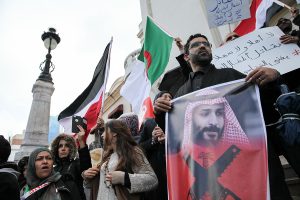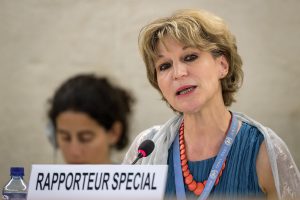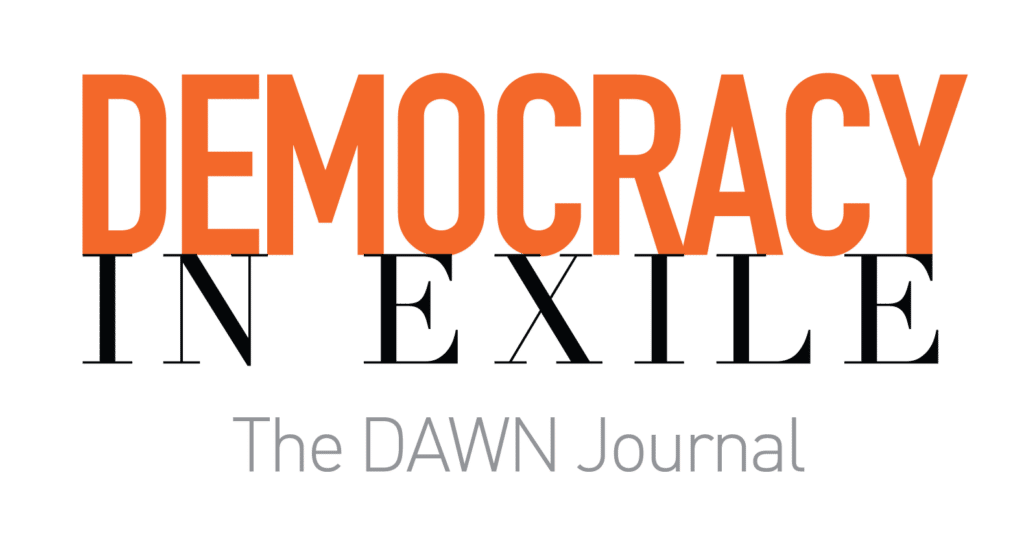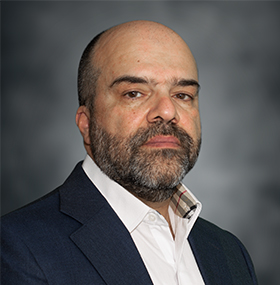Brahim El Guabli is the chair and associate professor of Arabic studies and comparative literature at Williams College. An Amazigh scholar from Morocco, he is the author of Moroccan Other-Archives: History and Citizenship After State Violence.
When the earthquake struck late at night, entire villages in Morocco's High Atlas Mountains collapsed in on themselves in a matter of seconds. More than 50,000 homes were completely or partly demolished by the 6.8 magnitude earthquake, the strongest to hit Morocco in more than a century. Nearly 3,000 people were killed, according to the latest government figures, and more than 5,600 were injured—a figure that is still likely to rise as rescuers continue to reach remote areas near the earthquake's epicenter.
Divided administratively between the governorates of Azilal, Chichaoua, El Haouz, Ouarzazate and Taroudant, the High Atlas is home to some 600,000 people spread across thousands of villages dotting the mountains of central Morocco. Although Morocco witnessed a devastating earthquake in Agadir in 1960 and another one in El Hoceima in the Rif in 2004, this was the first time an earthquake of such destructive intensity hit the High Atlas.
In the initial aftermath, Moroccan authorities were tight-lipped in their statements about the earthquake. The absence of King Mohammed VI, who was on one of his frequent visits to France when the earthquake struck, fueled criticisms of the government's slow response. Since the king wields much power in times of emergencies, the earthquake to some regime critics exposed the failures of governance by the Makhzen—what Moroccans call the sprawling network of elites around the monarchy—and the economic and humanitarian costs of a lack of democracy. Others raised questions about the Moroccan authorities' reluctance to accept offers of foreign aid just as search-and-rescue efforts were underway.
Yahya El Yahyaoui, a Moroccan professor at the Mohammed V University in Rabat, wrote on Facebook that while Moroccans acted spontaneously to help each other, this should not "replace negligent public policies which do not have any effect on the ground."
Hope of finding survivors in the earthquake's aftermath was running out against a long history of marginalization and territorial inequities in the High Atlas.
- Brahim El Guabli
At the king's order, the Moroccan army was deployed to devastated mountain areas. Although the army has better resources to deal with emergencies than any other state agency in the country, the very nature of the terrain played against any rescue mission. In the rugged High Atlas, many roads were demolished by the earthquake; others were blocked by huge boulders and landslides. The lack of adequate infrastructure worsened the situation and provoked anger among those who simply did not receive assistance in time. Survivors who lost their loved ones in the rubble did not hold back their criticisms of the government. In a video posted on social media, a survivor who lost members of his family on the Taroudant side of the High Atlas condemned the slow response that led to the death of people who were not rescued in time. "Officials are not here," he said. They only show up in these forsaken villages, he explained, when they need people's votes during elections, before they disappear again—a practice that has plagued Moroccan politics for many decades now.
These survivors cannot be blamed for wanting to cling to any sign of hope that their loved ones could be saved. Yet this hope was running out against a long history of marginalization and territorial inequities in the High Atlas. Since Morocco's independence from French colonial rule in 1956, the region has never received enough resources from the government to develop even basic infrastructure. The French colonial administration had divided the country into a "useful Morocco," located in the arable plains and coastal areas rich with fisheries, and "useless Morocco," situated east and south of the High Atlas. While the "useful Morocco" benefited from the construction of new cities and modern infrastructure, the "useless" side was mainly approached as a site of rebellion against colonial authorities and a source of mineral resources. This colonial legacy far outlasted the end of the French occupation since these mountain communities had, in many ways, been left on their own for decades by the post-independence state.

From big cities to small towns, Moroccans have rushed to donate whatever they can afford to help their fellow citizens. Caravans of aid and donations arrived from places as far as Oujda and the Rif. Despite the government's awkward and slow response in the first hours of the tragedy, the collective mobilization of ordinary Moroccans after the earthquake created a moment of national solidarity as people discovered another part of their country that many would not have if it were not for the earthquake.
Not all of the destruction from the earthquake can be quantified. The hardest-hit regions of Chichaoua, El Haouz, Ouarzazate and Taroudant are all home to the Amazigh, or Imazighen, the indigenous people of North Africa (the Romans gave them the racializing name the Berbers). They speak Tamazight, the indigenous language spoken in a vast region extending from the Canary Islands in the Atlantic Ocean to the oasis of Siwa in southwest Egypt. This is the Tamazgha or Amazigh homeland. The hundreds of High Atlas villages that were ravaged by the earthquake have distinctly Amazigh linguistic, cultural, social and cultural characteristics that, in the words of prominent Moroccan anthropologist Abdellah Hammoudi, formed a distinct "agrarian civilization." Through its traditions, architectural style, agricultural culture and ecological makeup, this area has sustained a distinctly Amazigh way of life.
As a civilizational space, this area of the High Atlas has centuries-old mosques, kasbahs, shrines to Jewish and Muslim saints, and natural wonders of enormous environmental value. The mosque of Tinmel, which was the cradle of the Almohad dynasty in the 12th century, and the 19th-century kasbah of El Goundafi, were both entirely demolished in the earthquake. The earthquake also caused significant damage to El Glaoui's historic kasbah in Telouet. These historical sites have been part of the landscape of the High Atlas for centuries, forming a crucial element in the cultural and spiritual geography of the mountain region. Their restoration is a matter of national importance. The Moroccan state should allocate funds to rebuild even privately owned sites of historical significance.
With the full demographic and social impact of the earthquake still emerging, Morocco's High Atlas may never be the same.
- Brahim El Guabli
Apart from its material damage, the earthquake could also potentially affect the local Amazigh architectural style. Houses in the area are built of adobe and mud bricks covered with wood beams and mud, which made them particularly vulnerable to earthquakes. Yet these houses, which blend splendidly with their ecological space, are traditionally eco-friendly, economical and serve both humans and animals. The houses are built against the mountain in a manner that resembles terrace agriculture: The mountain is part of the house, and the house part of the mountain. This architecture has intrinsic value for Amazigh and it should be preserved, for their sake and for all of North Africa's. Any eventual reconstruction projects must recognize that this is an area whose indigenous culture and ecology should not be condemned to end with an earthquake.
I spoke recently with Hammoudi, who suggested that the state use the tradition of village councils to create local units in order to supervise eventual reconstruction, combining traditional know-how with earthquake-resistant construction techniques in order to preserve these cultural and sociological characteristics for future generations. The region's linguistic heritage should also not be ignored. The names of places must be preserved to keep the areas culturally intact; Amazigh toponymy must not be Arabized.
Six days after the earthquake, the royal court issued a statement that details the contours of an emergency program for reconstruction. Afflicted families will apparently receive $3,000, in addition to $14,000 for fully destroyed houses and $8,000 for partially demolished homes. The palace's statement instructed officials to implement these directions while "respecting the residents' dignity, customs, traditions and heritage."
With the full demographic and social impact of the earthquake still emerging, Morocco's High Atlas may never be the same. But one thing is certain: It will still retain its Amazigh spirit, the source of its resilience in the first place.





































